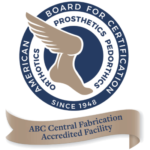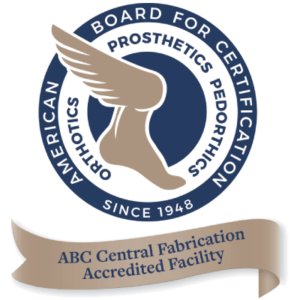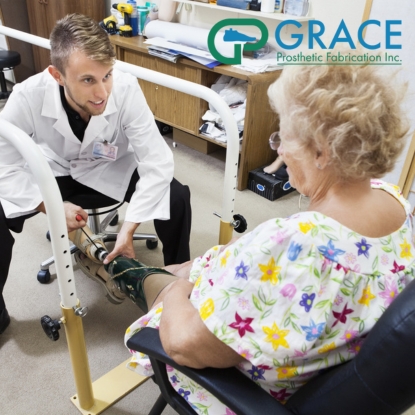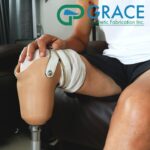What are a few key factors for residual limb care?
A patient can’t simply put on their prosthesis and not take care of it. We’ve actually covered the importance of proper maintenance and care of a prosthetic device and its socket multiple times, but we haven’t really discussed residual limb care.
Today, we’re going to fix that. We’re going to explain what can happen when a patient doesn’t focus on the skincare of their residual limb and then provide you with some simple tips that you can pass along. They may not be able to avoid skin problems entirely, but they can definitely reduce their frequency and severity.
Potential Risk Factors for Skin Conditions
The unfortunate truth is that many of the circulation or nerve disorders that led to a patient’s amputation also put them at risk for certain skin conditions. This is because these disorders will often impair sensation, which means they’re often not aware that they have a problem until it’s severe.
There are two stages involved when dealing with skin problems:
Skin Breakdown
Skin breakdown will often occur in the area of bony prominences, the margin of a prosthetic socket, and the distal residual limb. It will begin with erythema and then move on to pain, swelling, blisters, and ulcers. If skin breakdown isn’t cared for right away, it may become an infection in a relatively short period of time.
Skin Infection
A person who has normal, healthy skin is often able to keep bacteria at bay because of the dry epidermis. On the other hand, with a prosthetic patient, the apparatus will often create a warm, moist environment that encourages bacterial growth. This can lead to a severe skin infection that may include pustules and discharge. If this occurs, medical treatment will be necessary, along with the removal of the prosthesis, until the infection has cleared up.
Easy-to-Follow Tips for Residual Limb Care
With a little dedication and a bit of hard work, it’s relatively easy for a patient to reduce the chances of a skin breakdown and/or infection. To make things a bit easier, we’ve compiled some quick residual limb care tips that you can pass along to your patient:
Wear a Properly Fitting Prosthetic
The first way that you can help prevent skin breakdown and infection is to wear a properly fitting prosthetic. The best way to make sure this happens is to work with reputable prosthetic companies. This is especially important for the socket. The designers at Grace, for example, have many years of experience and will use the latest technologies to ensure a proper fit.
Cleanse the Residual Limb Daily
It’s understandable that some patients will get tired of cleansing their residual limb every day, but you need to explain how important this is. Keeping the residual limb clean, i.e., free of dirt and debris, will help avoid skin problems.
If there does happen to be a skin breakdown, this can help slow down the infection and give them more time to see their doctor. The good news is that all they really need to use is mild soap and water. Just be sure to avoid cleaning agents with alcohol or harsh chemicals.
Clean the Prosthetic Socket Often
Even the most well-fitting prosthetic socket will sometimes get small bits of dirt and debris between the socket and skin. This is why it’s important that the patient remove the prosthetic socket at night and clean it before going to bed. Just like with the residual limb, all you really need to use is soap and water. Combine this with cleaning the residual limb, and there’s a much lower chance of skin breakdown and infection.
Moisturize Your Skin When It’s at Risk
As we previously explained, many prosthetic patients are at risk of skin problems for the same reasons that they are at risk of amputation. If a patient has some type of disorder that affects their circulation, or perhaps their skin is otherwise prone to cracking or peeling, make sure they keep their skin moisturized. We suggest that they always use lotions and moisturizers that are made specifically for prosthetic patients.
Don’t Shave Your Residual Limb
Many patients like the idea of either shaving their residual limb or using a chemical hair remover. Although it might be fine for a while, once the stubble comes in contact with the prosthetic socket, the hair may grow inward, leading to infection. If this happens, they’ll need to use something like a drawing salve to get the ingrown hairs out of their skin.
Eat Well and Stay Hydrated
Eating well and staying hydrated will do two things for your patient: they will help them maintain a healthy weight and flush out impurities in their skin. Maintaining a healthy weight is important to help ensure that the prosthetic socket is properly fitted. Staying hydrated to flush out impurities will lower the chances of a skin infection forming.
React Quickly to a Skin Problem
Too many prosthetic patients allow a skin breakdown to become an infection because they don’t go to the doctor quickly enough. Let your patient know that they should contact you at the very first sign that there’s a problem. If the breakdown is only slight, they may be able to treat it themselves. But if it doesn’t seem better after a day or two, they should definitely schedule an appointment right away.
Contact Grace to Learn More About Our Prosthetic Socket Process
Grace Prosthetic Fabrication uses their expertise and all the best technologies to create reliable prosthetic sockets and other devices. If you have any questions about our prosthetic and orthotic process or would like to order one of our products, give us a call at (800) 940-5347 today.






